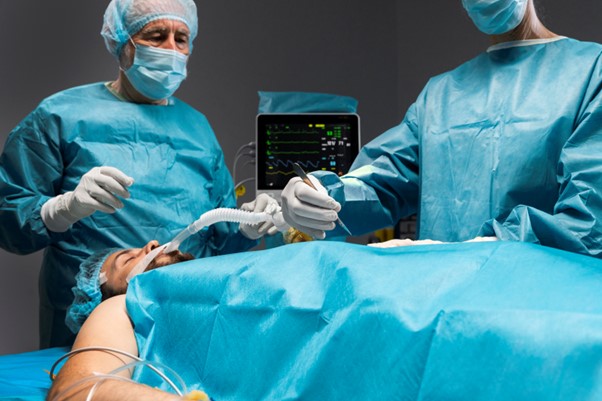What is Laparoscopic Hernia Repair?
Laparoscopic hernia repair is a minimally invasive surgery. Doctors use small cuts and a camera to fix hernias. Because of this, many people call it keyhole surgery. The primary goal is to repair the weak spot in the muscle wall. This method often leads to less pain and a quicker recovery than open surgery. Most patients return to normal activities sooner. According to the CDC, minimally invasive hernia surgery is safe and effective for many people.
Symptoms Indicating Hernia Repair
Sometimes, hernias do not cause pain. However, certain signs may mean you need hernia repair. For example, you should watch for:A visible bulge in your abdomen or groinPain or discomfort, especially when lifting or bendingSwelling that gets worse with activityFeeling of heaviness or pressureBurning or aching at the bulge siteNausea or vomiting (in severe cases)
If you notice these symptoms, it is important to see a doctor. Early treatment can prevent complications.
Causes of Hernias
Hernias happen when a weak spot in the muscle allows tissue to push through. There are several common causes:Heavy lifting or strainingChronic coughing or sneezingObesity or sudden weight gainPregnancyPrevious surgery in the areaFamily history of hernias
Sometimes, hernias develop without a clear reason. But, knowing the causes can help you lower your risk.
Diagnosis Process
Doctors use several steps to diagnose a hernia. First, they ask about your symptoms. Next, they perform a physical exam. Often, you may be asked to stand or cough. This helps the doctor feel the bulge. In some cases, imaging tests are needed. These may include:UltrasoundCT scanMRI
These tests help confirm the diagnosis and plan the best treatment. Early diagnosis can lead to better outcomes.
The Laparoscopic Hernia Repair Procedure
During laparoscopic hernia repair, the surgeon makes three to four small cuts. Then, a thin tube with a camera (laparoscope) is inserted. This camera sends images to a screen. Next, the surgeon uses special tools to repair the hernia. Usually, a mesh is placed to strengthen the muscle wall. Because the cuts are small, there is less damage to surrounding tissue. The whole procedure often takes one to two hours. Most patients go home the same day.
Benefits of Laparoscopic Surgery
Laparoscopic hernia surgery offers many advantages. For example, patients often experience:Less pain after surgerySmaller scarsShorter hospital stayFaster return to daily activitiesLower risk of infectionQuicker hernia repair recovery time
According to the World Health Organization, these benefits make minimally invasive hernia surgery a popular choice. However, not everyone is a candidate. Your doctor will help you decide.
Recovery and Aftercare Tips
After laparoscopic hernia repair, most people recover quickly. Still, following your doctor’s advice is important. Here are some tips for a smooth recovery:Rest for the first few daysTake pain medicine as prescribedWalk gently to improve blood flowAvoid heavy lifting for at least two weeksKeep the incision area clean and dryWatch for signs of infection, such as redness or fever
Usually, you can return to light activities within a week. But, always check with your surgeon before resuming exercise or work.
Prevention and Lifestyle Guidance
While not all hernias can be prevented, certain steps may lower your risk. For example:Maintain a healthy weightEat a balanced diet with fiberExercise regularly, but avoid heavy liftingStop smoking to reduce coughingTreat chronic coughs or constipation
By making these lifestyle changes, you can support your overall health and reduce hernia risk.
Risks and Possible Complications
Although laparoscopic hernia repair is safe, every surgery has risks. Possible complications include:Bleeding or infectionInjury to nearby organsHernia coming back (recurrence)Chronic pain at the repair siteProblems with the mesh
However, most people have no serious problems. If you notice severe pain, swelling, or fever, contact your doctor right away.
In summary, laparoscopic hernia repair is a safe and effective option for many people. For personalized advice, consult a qualified surgeon about your hernia repair options. Conclusion
Laparoscopic hernia repair is a safe and effective minimally invasive option for treating hernias. With smaller incisions, faster recovery, and less pain, it helps patients return to normal life sooner. For personalized guidance and to know if this surgery is right for you, consult a qualified surgeon.
Concerned about a hernia or planning your repair?
Visit AMVI Clinic – Dr. MD Sandeep for expert evaluation, advanced laparoscopic hernia repair, and tailored care to ensure a safe, smooth recovery. Book your consultation today!


